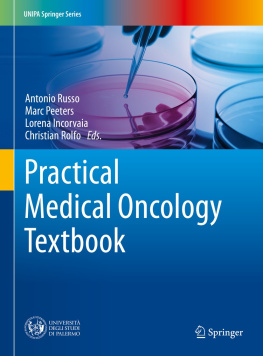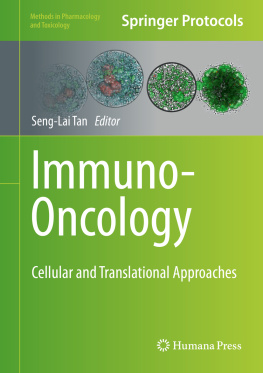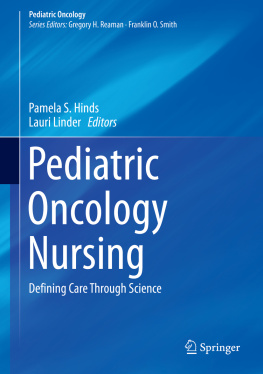1.1 What Is Team-Based Oncology Care?
It takes a team of professionals to manage the diagnosis and treatment of a cancer patient today. Each brings their own skills, knowledge, and experience to the table. With the exception of multidisciplinary consultations during which time a patient will likely be seeing several providers all at once, it is more common for a cancer patient to be meeting with providers one at a time, focusing on the expertise they have that is needed by that patient at this specific juncture along their continuum of care. This can feel and look like each discipline is functioning within their own silo, and to a great degree, this is true. The challenge is continuous effective communication with one another so the patient can move smoothly from one provider to another as they continue their treatments/care. There are also members of the team who the patient will likely never personally meet; these professionals include pathologists and radiologists, for example, who have a pivotal role in diagnosing cancer, staging the cancer, and identifying other findings that may very well impact the patients treatment going forward. At any given time, one individual may be the most important member on the team to that patient. For example, getting the results from the surgery that was performed is critically important postoperatively and rests in the hands of an experienced pathologist to determine the extent of the cancer; its prognostic factors, if all of the cancer was surgically removed; and other specifics about the cancer cells features that will directly impact the decisions that will next be made regarding the next phase of the patients treatment. Patients also may need to be navigated backward along their care continuum when an unanticipated finding was learned about the cancer, which requires extending specific forms of treatment or changing the surgical plans originally made. The navigator needs to remain the constant point of contact.
In 1999 the Institute of Medicines Ensuring Quality Cancer Care described the interdisciplinary cancer care team as including an oncology nurse, pathologist, radiation oncologist, medical oncologist, surgeon, nutritionist, social worker, occupational therapist, pastoral counselor, hospice volunteer, and pain management team made up of physicians, nurses, and pharmacists []. The importance of there always being collaboration among all the team members, including the timely transfer of information among members of the team, is essential. Someone to facilitate coordination of care and undo barriers to care is a strength of the navigator professionals.
In 2011, the IOM convened the Best Practices Innovation Collaborative of the Institute of Medicine Roundtable on Value and Science-Driven Health Care which evolved into a discussion paper []. Additional ideals, particularly when working with underserved cancer patients, are trust, respect, patience, and the ability to truly listen to the patient as well as to other members of the healthcare team.
This IOM roundtable identified principles of team-based healthcare []. These are:
Shared goals: The team, including the patient and, where appropriate, family members or other support persons, works to establish shared goals that reflect patient and family priorities and can be clearly articulated, understood, and supported by all team members.
Clear roles: There are clear expectations for each team members functions, responsibilities, and accountabilities, which optimize the teams efficiency and often make it possible for the team to take advantage of division of labor, thereby accomplishing more than the sum of its parts.
Mutual trust: Team members earn each others trust, creating strong norms of reciprocity and greater opportunities for shared achievement.
Effective communication: The team prioritizes and continuously refines its communication skills. It has consistent channels for candid and complete communication, which are accessed and used by all team members across all settings.
Measurable processes and outcomes: The team agrees on and implements reliable and timely feedback on successes and failures in both the functioning of the team and achievement of the teams goals. These are used to track and improve performance immediately and over time [].
1.2 The Roles and Responsibilities of Various Oncology Team Members
The diversity of the oncology care team varies depending on the type of cancer, location of the clinical facility, and local resources. Building relationships with patients is a valued component in oncology care. These team members include support staff who frequently are ignored but are critical to making patients feel comfortable; helping making referrals; assuring timely appointments; scheduling admissions, procedures, tests, and treatments; greeting patients; answering phone calls and talking with patients politely; and assisting with financial and insurance issues []. They typically are the first interactions the patients and families have with the oncology team. Because the patients and families typically are stressed dealing with a life-threatening disease, it is essential that members of the oncology team are supportive of the patients and families as well as of one another who are team members. This also means that there needs to be organized and regular communication among team members about the patient so that all are in the loop.
There has been confusion for patients as well as even oncology team members what the roles are of various individuals on the team; most commonly these professionals are navigators, nurses, physician assistants, and social workers. Their roles and responsibilities are described below.
Patients need to actually be part of their own care team too, providing accurate information about their medical history, current side effects, and compliance with taking medications as prescribed; participating in the decision-making about treatment; and also sharing their life goals as well as upcoming milestone events that should not be sacrificed to cancer and its treatment. The team should be informed, for example, about an upcoming important family event (impending birth ceremony), naming or puberty ceremony (Indigenous Peoples), or responsibilities (work retreat, firework sales in June and early July that support the family for the rest of the year, a granddaughters wedding). This enables the oncology team member to plan treatments sooner or delay by a few weeks, avoiding the patient missing key family or work events, because patients should only need to give cancer the time it requires to get rid of it and not allow it to steal away any more of the patients time. And for patients with advanced disease, quality of life and moments of joy are to be maximized instead of forfeited to their cancer.
1.3 Understanding the Complexity of Cancer Care
Cancer is a very complex disease and the healthcare system is overwhelming to most patients. The IOM 1999 report, Ensuring Quality Cancer Care [], recognized these complexities and made a number of key recommendations to assure that all Americans receive high-quality care. These include:









